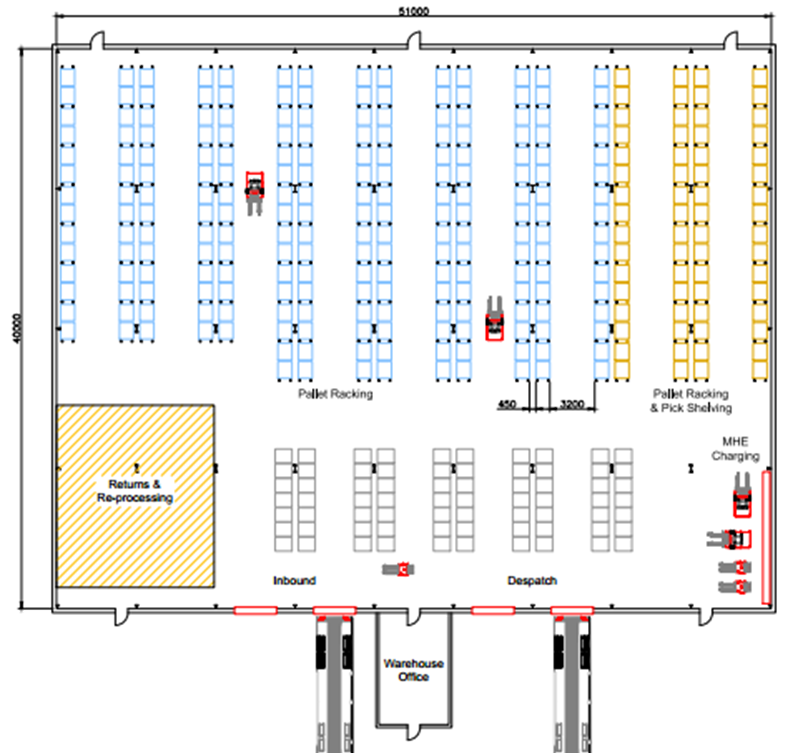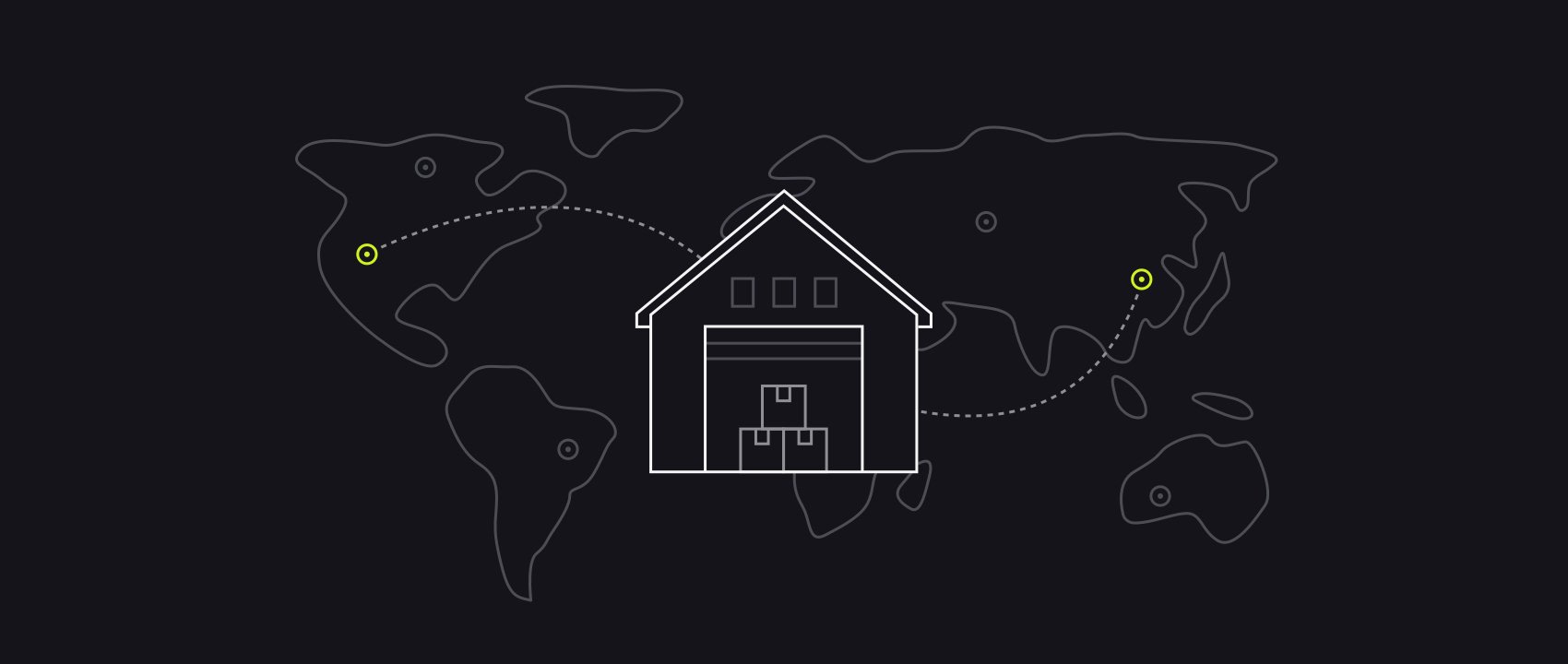This post was originally written by Nathan Resnick, CEO of Sourcify in August 2017 and since has been updated for accuracy and readability.
In today’s global supply chain, international warehouses are your hubs. They ensure timely delivery of goods to far-flung customers at an affordable cost and with a minimum of shipping challenges.
Moreover, international order fulfillment is a key extension of your brand identity—giving your international customers the complete brand experience instead of getting a generic one from Amazon.
And in this time of the pandemic, it’s more important than ever to have the full control of your inventory and shipping worldwide that international warehouses offer. Think of the challenges that come with managing different shipping rules and regulations put in place by different countries in light of the pandemic. Can you get packages into quarantine zones from outside? Do you want returns coming back to your central warehouse from a foreign hot zone? Are you even able to take returns from these areas? And for your customer, think of the frustration of delayed, stolen, or damaged packages at a time when so many people are relying on delivery service.
While there are challenges inherent in managing inventory distribution across multiple global locations, the benefits of international warehousing for your supply chain, shipping, and speed of order fulfillment are crucial to growing your sales across borders.
When you need to use international warehouses
The reality of international sales is that global shipping costs are growing year over year. Having international warehouse space means cutting both shipping costs and shipping times, giving you an advantage with positive customer experience in an increasingly competitive delivery market.
But setting up international warehouses can be more complex than setting up multiple storefronts or global marketing campaigns. You will not only face different rules and regulations in each country but also potential language barriers and cultural differences.
That’s why working with a third party logistics (3PL) company at an international warehouse will optimize your global logistics ability while helping optimize your supply chain. Using 3PL and an international warehouse means that you will cut out the cost of duties on your products when they are shipping locally, which should make your international shipping smoother.
For the most part, warehouses that are setup internationally will be located in global trade hubs like Hong Kong, Los Angeles, and Houston. No matter where your headquarters and manufacturing are located, strategically placed warehouses let you easily cross borders throughout Asia, Europe, and North America.
The hard part in setup revolves around finding a good partner and picking the right location.
How to choose your international warehouse location(s)
Traditionally, choosing an international warehouse location has come down to figuring out where most of your international customers are based. Are they in Europe? Then perhaps consider warehouse space in the United Kingdom. Does most of your international business happen in China? Then a warehouse somewhere in Asia makes sense.
But the COVID-19 pandemic has shown us that this is no longer the only question to consider. What happens if there are lockdowns (for whatever reasons) in the region where your warehouse resides? Without access to your product, what will happen to your business in that area? Centralized fulfillment centers now represent single points of failure that can bring your business to its knees. You can ensure you serve your customers best by having a more diversified fulfillment strategy available to draw on in a crisis.
When choosing where to partner, you also need to consider import and shipping laws. Check the legality of importing a product in a certain region through designated government websites. Did you know, for example, that the FDA considers all sunglasses as medical devices, and that your manufacturer has to be FDA approved? It is always important to check import regulations around a product before bringing it into a country.
Costs associated with warehouses and fulfillment
The costs associated with warehouses are typically broken down by your warehousing partner between actual warehouse and fulfillment costs.
Warehousing costs will include things like the lease, employee salary, equipment costs, and the electrical bill. They are usually included under the umbrella of a ‘total warehousing fee.’ Most warehousing partners will have minimum monthly fees that they charge their clients regardless of whether the client has had a slow month of fulfillment.
Fulfillment cost type
Fulfillment pricing fee per unit
Sample proposal from Fulfillment Companies
Policies and procedures to consider
Locations and costs aren’t the be-all and end-all of your decision making. When evaluating warehouses, the lowest price and best location won’t protect you from failure if your business isn’t well-suited for a particular warehouse.
Specific policies and procedures dictate the general conduct of a warehouse’s operation. Such policies should be clearly spelled out, and you need to check the warehouse’s track record of past clients to see how they’ve dealt with conflicts before.
The kinds of policies you should expect include:
- Management policy and procedures guideline
- Health and safety measurement
- Human resources management
- Security and pest control
- Maintenance and cleaning
- Quality control
- Record keeping and reporting
- Reverse logistics for returns
- Disposal of obsolete and damaged goods
Warehouse procedures must take into consideration local laws, which is why having a local international warehousing partner is recommended. Though these procedures should provide checks and balances, they must also have the flexibility to cater to unique situations. A good warehouse is focused on the end goal of a procedure, so it is common practice, to limit the level of details in the procedures document.
A guide to selecting an international warehouse
To choose an international warehouse 3PL, Adam Rosenberg, Director of Operations at ShipHero, a Shopify Plus technology partner, suggests two tests:
“First, visit their facility to see what kind of products they're shipping. While on-site, take note of the products that are similar to you and ask if you can speak to a few of the business owners—the specific companies and brands you’ve identified that that 3PL supports. Asking the 3PL to provide a reference is not reliable because they might have you speak to a client that is really small or a friend or relative that will only say good things.
“Second, find out what their procedures are for different items that are important to your business. One example is asking how they handle changes to an order (such as changing a customer's address). If their answer is ‘email us’ or ‘call us,’ that's a red flag!
“Software should allow either the customer or the 3PL to quickly identify orders that need special attention or to make simple changes such as address changes, add or subtract an item, or add packer notes easily all with a unique, secure login to the client's private 3PL account.
“Those changes need to be automatic, tracked, and instant.”
Along those same lines, Robin H. Smith, Co-Founder of VL OMNI, another Shopify Plus Technology Partner, also stresses the need to examine each warehouse’s tech:
“As an integral part of your 3PL partnership, the key thing to look at in an international warehouse—beyond, services, space, and pricing—are what technologies they use.
“There are four levels of players:
(1) the big brands who are heavily invested in solid technology,
(2) those that use off-the-shelf software,
(3) those that have built it themselves, and
(4) those that have limited technological experience and often run their businesses on spreadsheets.
“The last category play on price. Make sure your partner is giving you a clear picture of what their technology is, who supports it and, how flexible it is. Only then begin negotiating on price.
“Steer clear of any 3PL that wants to take over and control all the channels in your business. You have to ask yourself: what is their core business? Is it being a 3PL warehouse or an agency?
“Too often we see customers locked into a 3PL with no way to move away. The desire to move usually happens when a company starts to scale and they need multiple 3PLs in different countries, or when the existing 3PL provides poor service. The other red flag is a 3PL that refuses to share and expose their connectivity options including their API.”
Beyond those frontline issues, the key factors to consider when selecting this warehouse include:
- Characteristics of goods to be stored
- Equipment available to handle the goods
- Estimated duration of storage needed
- Need for third-party logistic activities
- Size of the warehouse
- Past clients the warehouse has worked with
- Security of the warehouse
- Storage requirements of your company
To understand your exact storage requirements, you’ll need to know the details of how your product is stored (on pallets, for example) and your expected sales volume in the area. For instance, if you know you’re going to sell a lot of products in China during the Lunar New Year in February, it would be smart to move more inventory to that region to prepare for the sales season.
Lastly, when selecting a warehouse, focus on a layout that facilitates growth and allocates you more space as you need it. You want your business to scale with the warehouse, instead of having to find a new one every year or two.

Image from Go Supply Chain
International customers and global warehouses
Now that you’ve seen how an international warehouse can fit into your business, it’s time to explore your options. To make an informed decision, you’re going to need feet on the ground. You can either hire a consultant to help you scope out the options or head abroad yourself.
With an international warehouse, you can create a better experience for your customers abroad while drastically improving your shipping times. The worst-case outcome would be not ultimately needing the space because your international sales don’t spike as you expect. But the real magic moment will come when your international warehouse feels like a fully integrated part of your business, even if it’s thousands of miles away from your home base.
Common Questions Related to International Warehouse
What is an international warehouse?
An international warehouse is a warehouse that’s set up internationally, typically located in a global trade hub like Los Angeles or Houston. This lets you deliver goods to your customers wherever they are, in a timely manner and with minimal challenges.
What are the main methods for cross border ecommerce logistics?
The main methods for cross border ecommerce logistics include directly shipping to overseas customers and stocking inventory in warehouses located in free trade zones.
How do I choose a warehouse location?
To choose a warehouse location, consider factors like where your customers are located, where carriers are located, and your product storage requirements, to name a few.
What is the difference between a warehouse and a distribution center?
The difference between a warehouse and a distribution center is that a warehouse stores goods while distribution centers can do additional tasks like fulfill and package orders.






